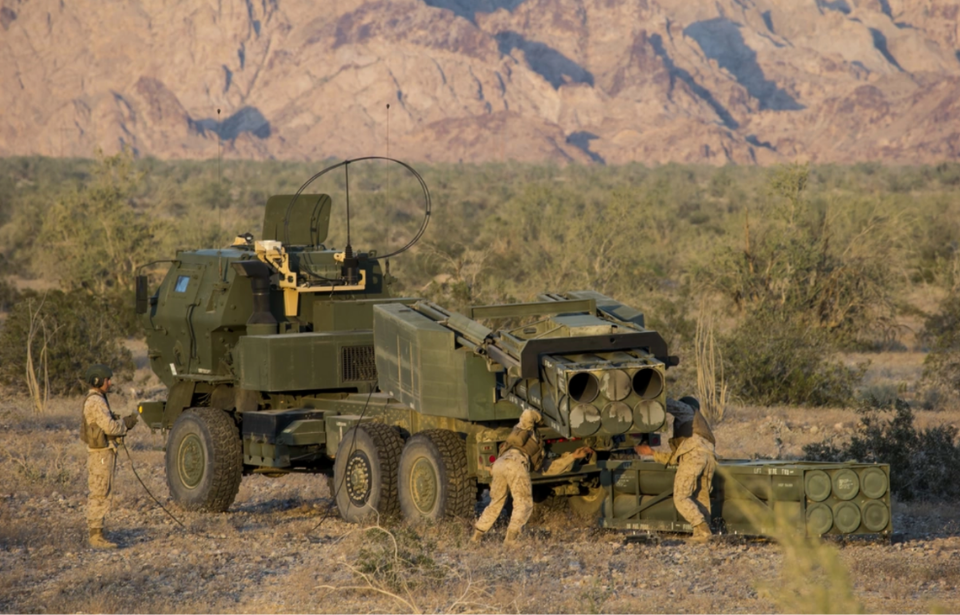The M142 High Mobility Artillery Rocket System (HIMARS) has been getting a lot of press lately, due to the 2022 Russian invasion of Ukraine. The light-weight rocket launcher, which is mounted to an XM1140A1 chassis, is able to provide responsive and lethal support in all weather conditions with impressive precision.
Development of a new rocket launch system
The M142 HIMARS was designed “to support joint early and forced entry expeditionary operations with high-volume destructive, suppressive and counter-battery fires.” Developed in the late 1990s for use by the US Army, it’s the wheeled version of the M270 Multiple Launch Rocket System (MLRS).
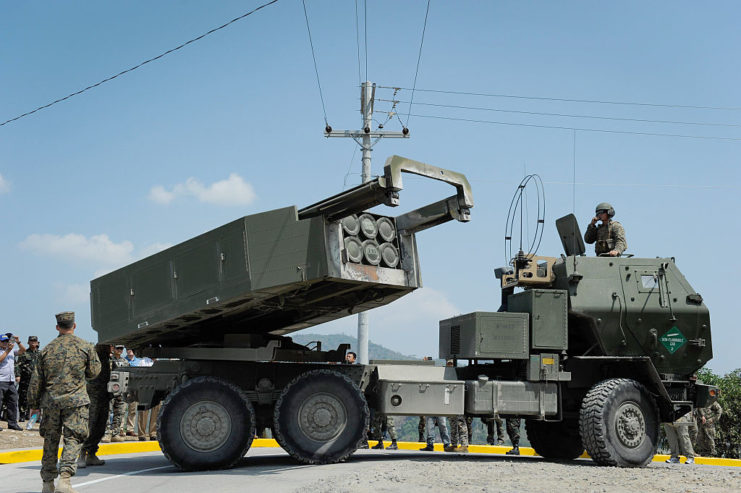
The HIMARS has been built by a number of manufacturers over the years. Until 2010, the chassis was produced by BAE System Mobility & Protection Systems, after which production was taken over by the Oshkosh Corporation. Since 2017, both the launcher system and the chassis are produced by Lockheed Martin Missiles & Fire Control.
To date, around 414 units have been built.
M142 HIMARS specs
The M142 HIMARS is made up of two different components, the launcher and a five-ton truck chassis from the US Army’s Family of Medium Tactical Vehicles (FMTV). While large, it’s not as big as other similar systems. Weighing in at 35,800 pounds when loaded and at only seven meters in length, it’s small enough to be transported by a Lockheed C-130 Hercules.
To operate, the HIMARS requires a crew of only three: the driver, the gunner and the launcher chief.
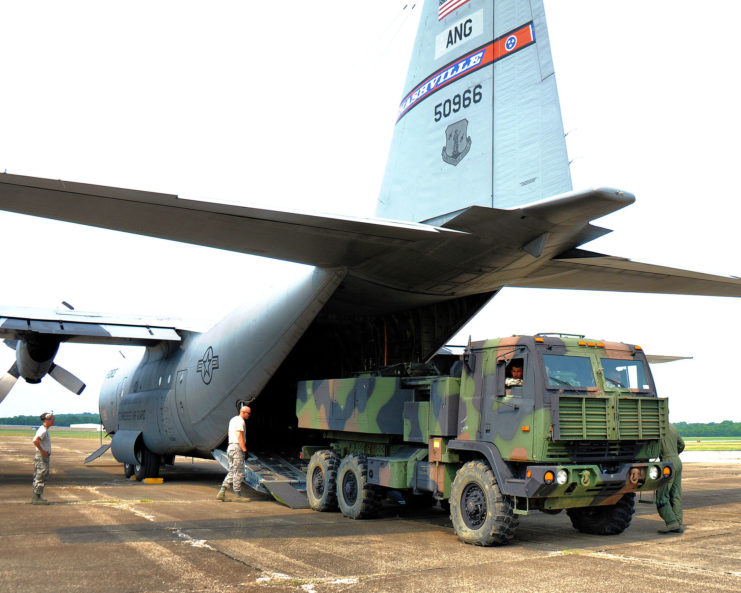
The HIMARS is equipped to carry six 227 mm guided artillery rockets (M26, M30/M31), which lock onto targets through the use of GPS or infrared sensors, or one MGM-140 Army Tactical Missile System (ATACMS) missile. The pod in which the weapons are mounted is identical to the twin ones equipped by the M270, giving it 50 percent of its counterpart’s firepower.
Given the variation in munitions, the system has an effective targeting distance of between 40 and 300 miles.
Use of the M142 HIMARS
The primary (and first) country to equip the M142 HIMARS is the United States. In May 2005, the system was introduced to the US Army’s 3rd Battalion, 27th Field Artillery Regiment, XVIII Airborne Corps Artillery. It has since seen its use expanded to other areas of the Army, as well as with the Army National Guard and the US Marine Corps.
Other countries that have adopted the HIMARS into their weapons catalog are Singapore, the United Arab Emirates (UAE), Romania and Jordan, with others discussing the possibility of operating the system in the future.
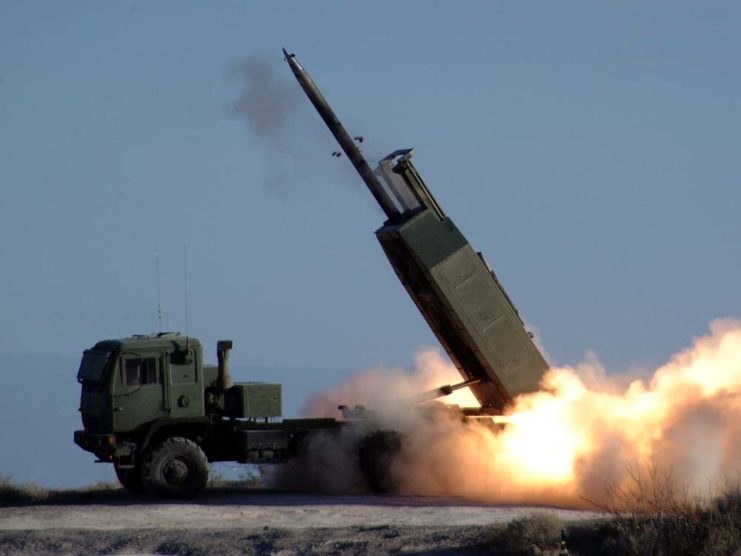
The HIMARS has seen use in a handful of conflicts, most notable the wars in Iraq and Afghanistan. The US Army used the system in Iraq to avoid damaging buildings when fighting urban battles, and it played a key role in the Battle of Mosul in October 2016. While in service in Afghanistan as part of Operation Moshtarak, two rockets fired from a HIMARS unit fell 300 meters short of their target, killing 12 civilians. The system’s use was paused while a review of the incident was completed.
There has been use of HIMARS in the Syrian Civil War, as well. The US Army fired rockets into Syria in support of the rebels in March 2016. A month later, it was announced the US would be deploying the system to Turkey, as part of the battle against ISIL.
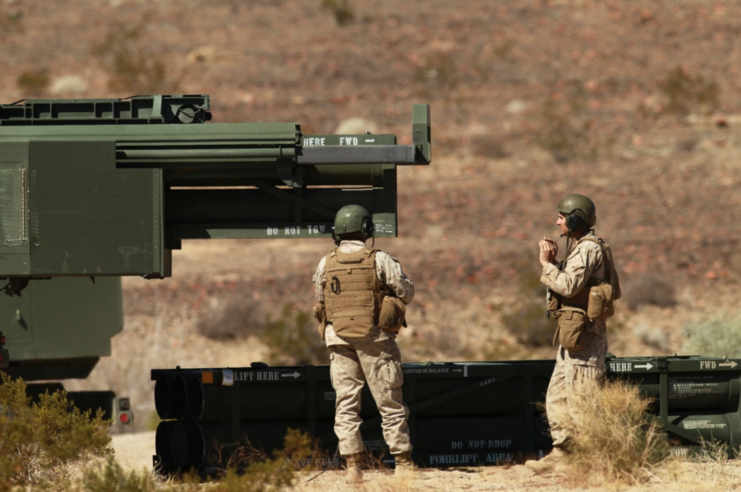
More from us: T-72: The Soviet-Era Tank That Continues to Serve the Russian Armed Forces
In May 2022, President Joe Biden wrote a commentary piece for The New York Times, in which he revealed the US government would be giving Ukraine “more advanced rocket systems and munitions.” While he didn’t specify the type of artillery, it was quickly confirmed to be four HIMARS, with the delivery of additional units to be discussed at a later date.
The HIMARS will only be equipped with the guided rockets, and it will take Ukrainian forces approximately three weeks to learn how to properly operate and maintain the systems. They will be sent overseas as part of a large military aid package, which also includes four Mi-17 helicopters; 15 tactical vehicles; 1,000 Javelins and 50 Command Launch Units; two air surveillance radars; five counter-artillery radars; 60,000 anti-armor weapons; 15,000 155 mm artillery rounds; and spare parts and equipment.
